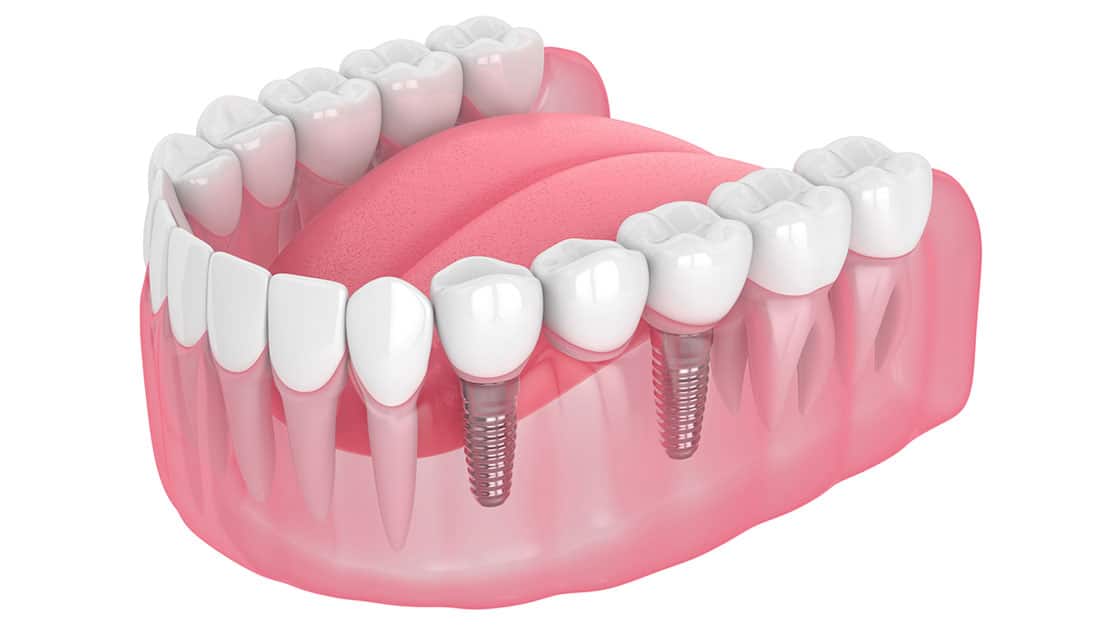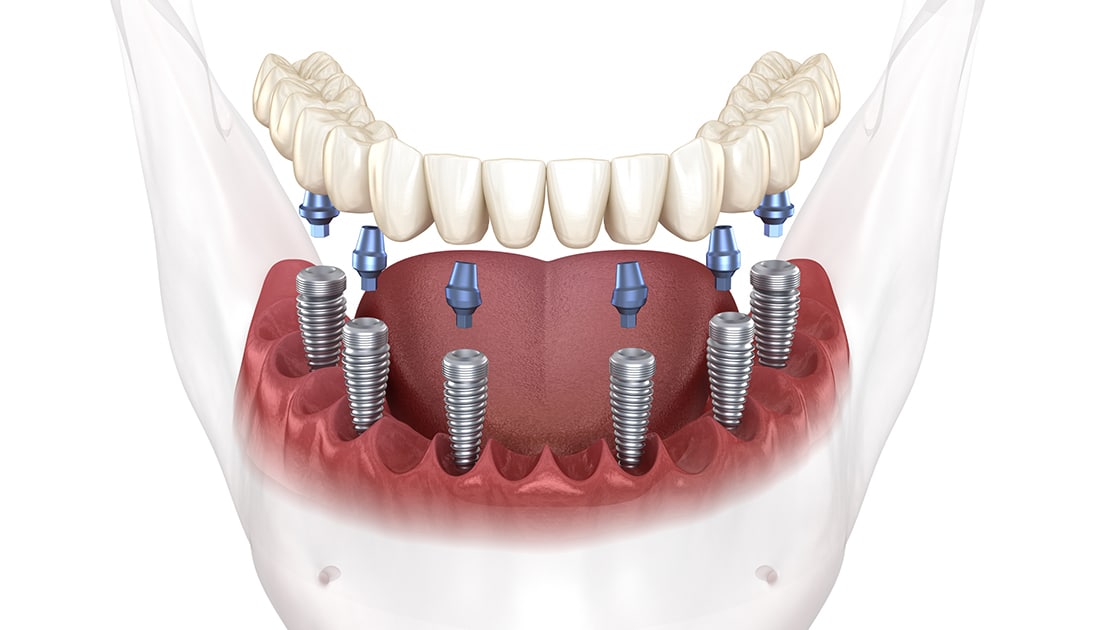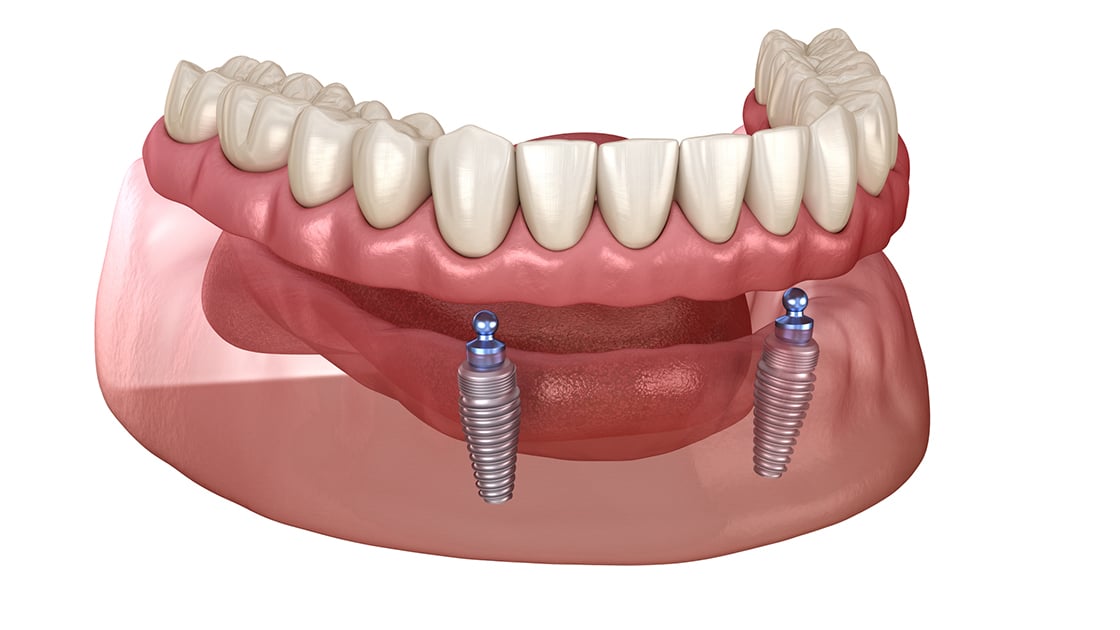
What is a Dental Implant?
Implant Supported Bridges

An implant supported bridge is a restorative solution for spaces where three or more adjacent teeth are missing. This restoration typically requires two implants to support the porcelain bridge. The bridge provides a functional and aesthetic replacement for a patient’s natural teeth.
What are the advantages of an implant supported bridge?
Because of the natural look and feel of the porcelain and the functional stability provided by the implants, implant supported bridges are an effective solution to replace multiple missing teeth.
A traditional bridge uses teeth on either side of the gap where teeth are missing for support. An implant supported bridge uses two or more dental implants rather than the adjacent teeth. When a bridge uses natural teeth for attachment, the natural teeth must be prepped for crowns and are then subject to increased stress which may be damaging – particularly if the existing tooth, roots, or surrounding bone structure are already compromised. A dental implant supported bridge replaced your missing teeth and avoids putting any additional stress on your natural teeth.
Implant Supported Dentures
For patients missing many or all of their teeth, implant retained or implant supported dentures may be an alternative to traditional dentures. These solutions can simulate the look and feel of natural teeth and stay fixed in place with the implants acting as anchors. Using implants for retention or the support of dentures allows for a smaller and more comfortable base and less shifting of the prosthesis during use.

Implant Supported Dentures

Implant Retained Dentures
Who is a good candidate for dental implants?

Are implant-supported dentures more comfortable than traditional dentures?
Implant-supported dentures are generally more comfortable than traditional dentures. Because they are securely anchored to dental implants, they do not slip, shift, or require adhesives. This stability allows for easier chewing and speaking, providing a more natural feel. Many patients find them to be a more secure, long-term solution that enhances both comfort and confidence compared to traditional removable dentures.
How long does the entire process take for a full-mouth restoration with implants?
A full-mouth restoration with dental implants typically takes several months to a year, depending on individual factors. The process begins with a consultation and diagnostic imaging. If extractions or bone grafting are needed, healing can take a few months. Next, the implants are placed and require 3–6 months to fuse with the bone. Once healed, abutments and custom prosthetic teeth are attached. We can provide you with a custom estimate during your consultation.
How do you care for dental implants and implant-supported dentures?
Caring for dental implants is similar to caring for natural teeth. We recommend brushing at least twice daily with a soft-bristled toothbrush and non-abrasive toothpaste and flossing around implants using floss threaders or interdental brushes. If your dentures are removable, clean them daily and soak them overnight as directed. Regular dental checkups are essential to monitor your implants and gum health. Avoid smoking and maintain a healthy diet to support long-term success and prevent potential complications.
What is the recovery process like for dental implants?
The recovery process after dental implant placement varies by patient but typically involves some swelling, mild discomfort, and soreness for a few days. Pain is usually manageable with over-the-counter or prescribed medication. Patients should stick to a soft-food diet for a few days and avoid strenuous activity. The implant site requires several months to fully heal as the implant integrates with the jawbone. Regular follow-ups ensure proper healing, and once complete, the final restoration is placed for a fully functional smile!
